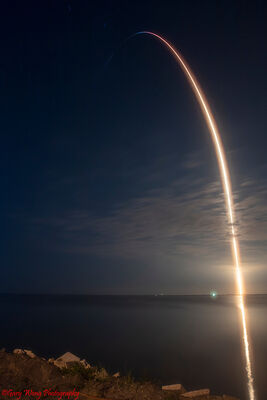what are characteristic differences among sensors?
Dec 2, 2013 06:39:03 #
lukan
Loc: Chicago, IL
In another topic, the discussion veered toward sensors, so I thought I'd ask the question by starting a new topic. What are some of the major and more subtle differences between Nikon, Sony, Toshiba, Kodak (if they're still in the game), Canon (I don't know if they even make their own) sensors in digital cameras? And, what sensors are in which brands and models of that brand?
Dec 2, 2013 06:56:36 #
This has been discussed before. One source to review is DxO. Gary http://www.dxomark.com/Cameras/Ratings
Dec 2, 2013 07:03:31 #
lukan
Loc: Chicago, IL
Gary, sorry for the redundance, and I thank you for the DxO link.
I'm new here and my immediate curiosity got the better of me. I'll be more diligent in the future in contemplating posting new topics.
I'm new here and my immediate curiosity got the better of me. I'll be more diligent in the future in contemplating posting new topics.
Dec 2, 2013 07:17:11 #
Not an issue, I just wanted to let you know this has been discussed as well as well as share the link.
If you do not ask, you will not get an answer. I am not one of those who gets upset when someone asks a question that had been asked before, I believe we have all done it.
Besides if all we do is search on a topic we do not need a forum, we just need Google. Gary
If you do not ask, you will not get an answer. I am not one of those who gets upset when someone asks a question that had been asked before, I believe we have all done it.
Besides if all we do is search on a topic we do not need a forum, we just need Google. Gary
Dec 2, 2013 07:23:59 #
gwong1 wrote:
Not an issue, I just wanted to let you know this has been discussed as well as well as share the link.
If you do not ask, you will not get an answer. I am not one of those who gets upset when someone asks a question that had been asked before, I believe we have all done it.
Besides if all we do is search on a topic we do not need a forum, we just need Google. Gary
If you do not ask, you will not get an answer. I am not one of those who gets upset when someone asks a question that had been asked before, I believe we have all done it.
Besides if all we do is search on a topic we do not need a forum, we just need Google. Gary
And, many times if the question is not asked just so what's there remains hidden
Dec 2, 2013 07:28:48 #
gwong1 wrote:
I agree. Anyone can ask the same question and others that see it may have a different answer. Many people, like me just don't have the time to be on the hog all the time. I for one would like to have the original post on sensors answered.Not an issue, I just wanted to let you know this has been discussed as well as well as share the link.
If you do not ask, you will not get an answer. I am not one of those who gets upset when someone asks a question that had been asked before, I believe we have all done it.
Besides if all we do is search on a topic we do not need a forum, we just need Google. Gary
If you do not ask, you will not get an answer. I am not one of those who gets upset when someone asks a question that had been asked before, I believe we have all done it.
Besides if all we do is search on a topic we do not need a forum, we just need Google. Gary
Dec 2, 2013 07:35:01 #
Bill MN wrote:
I agree. Anyone can ask the same question and others that see it may have a different answer. Many people, like me just don't have the time to be on the hog all the time. I for one would like to have the original post on sensors answered.
I also would like to see a answer. Maybe If MTSHOOTER gets on here, I know he knows.
Dec 2, 2013 08:09:50 #
For all, go to the Search function at the top, type in Sensor, and this is what you get. Enjoy the reading. Gary http://www.uglyhedgehog.com/search.jsp?q=sensors&u=&s=0
Bill MN wrote:
I agree. Anyone can ask the same question and others that see it may have a different answer. Many people, like me just don't have the time to be on the hog all the time. I for one would like to have the original post on sensors answered.
Dec 2, 2013 11:19:03 #
lukan
Loc: Chicago, IL
Thank you one and all for the links. I need to find out why some cameras' sensors and picture taking software (firmware) produce such different JPG files. I'll research this independently, but I'd love to hear anything enlightening from everyone who might have something to add, regardless if an expert or not.
For instance, Ken Rockwell has often said his D7100 produces better pictures (more pleasing to the eye) than his D800/E. My Oly EM-1 produces "better" pics than did my Canon 5DMk2 (jpegs, for sure). I'd love to hear some more comparisons from you all.
For instance, Ken Rockwell has often said his D7100 produces better pictures (more pleasing to the eye) than his D800/E. My Oly EM-1 produces "better" pics than did my Canon 5DMk2 (jpegs, for sure). I'd love to hear some more comparisons from you all.
Dec 2, 2013 13:18:51 #
I don't think it has been discussed much. Sensor size, FF vs crop, pixels has but otherwise?
Here is a couple things.
Sony is the big sensor maker. Makes the sensors for many cameras. These are modified for the different brands. What do those modifications do?
Anti-aliasing vs no anti-aliasing filters. Some cameras even have both.
Fuji has the x-trans sensor with a random color array. Many love Fuji colors.
Foveon (Sigma) are special. Great for a fine art photographer. Dare to be different.
What sensor is good for portraits? The old Fuji Dslrs were noted for portrait photography. Is there a noted portrait sensor today?
Is there a sensor better for landscape? Or not?
There is a lot to be discussed.
Here is a couple things.
Sony is the big sensor maker. Makes the sensors for many cameras. These are modified for the different brands. What do those modifications do?
Anti-aliasing vs no anti-aliasing filters. Some cameras even have both.
Fuji has the x-trans sensor with a random color array. Many love Fuji colors.
Foveon (Sigma) are special. Great for a fine art photographer. Dare to be different.
What sensor is good for portraits? The old Fuji Dslrs were noted for portrait photography. Is there a noted portrait sensor today?
Is there a sensor better for landscape? Or not?
There is a lot to be discussed.
Dec 3, 2013 15:51:57 #
The camera companies make a point of not telling customers what the sensors are or who makes them.
The point and shoot/bridge camera manufactures have the advantage of confusing terms for the size of the sensors. If they mention the sensor it is to make you think it is bigger than it is. They do like more mega pixel is better talk. Presented as a benefit, more likely to be a noise problem.
The SLR some useful information, but dont expect to hear that is a Sony sensor in a Nikon camera.
Getting useful and honest information is difficult. Getting buzz words is the usual fare.
DxOMark has useful information on sensors.
The point and shoot/bridge camera manufactures have the advantage of confusing terms for the size of the sensors. If they mention the sensor it is to make you think it is bigger than it is. They do like more mega pixel is better talk. Presented as a benefit, more likely to be a noise problem.
The SLR some useful information, but dont expect to hear that is a Sony sensor in a Nikon camera.
Getting useful and honest information is difficult. Getting buzz words is the usual fare.
DxOMark has useful information on sensors.
Dec 4, 2013 06:28:44 #
lukan
Loc: Chicago, IL
After digging a little more, I've concluded that it's really a combo package of sensor size, pixel number and pixel size on that sensor, the presence (or absence of) and type of anti-aliasing (low-pass) filters, and picture taking and color processing software. All of these elements are factors that give each brand, and models within that brand, their definitive "look". So now, I'd like to hear from your experiences which brand (and model) does what best: i.e. color rendition and which colors (reds, greens and blues, etc), skin tones for portraits, resolution of fine details, etc.
Dec 4, 2013 08:21:36 #
lukan wrote:
After digging a little more, I've concluded that i... (show quote)
Lukan:
First let me congratulate you on initiating a great discussion. This is what needs discussed. Not the DX vs FF argument that all too often occurs. If as many say the sensor is your camera film then the manufacturers should provide use with a lot more information about the sensors in their cameras. But inasmuch as the sensors are made by someone else, mostly by sony, they will not. Instead they give us more and more settings to manipulate, most of which people don't use or understand. Where am I going with this, not sure. Just had an idea. Instead of all the useless gimmickry being put into cameras why don't they have in the menu a list of all the film types that use to be available and tell us which camera settings would give us that effect. I know that there is PP software that changes the photo to match certain kinds of film but I would prefer to make the selection at the start of the picture taking process.
Dec 4, 2013 08:38:23 #
As an afterthought I think my idea would help newbies learn what are the real differences between FF and DX cameras. To all the newbies out there all I can say is more pixels doesn't mean better pictures . Learning all you can about sensors is a part of learning the craft of photography.
Dec 4, 2013 09:10:10 #
lukan wrote:
... What are some of the major and more subtle differences between ...
One of the major differences that often gets overlooked is pixel density. You can do a simple calculation:
MP x 1 million / (sensor width x sensor height) = pixel density
D800: 36.3 MP x 1 million / (35.9 x 24) = 42,131 pixels / square mm
D610: 24.3 MP x 1 million / (35.9 x 24) = 28,203 pixels / square mm
D7000: 16.2 MP x 1 million / (23.6 x 15.6) x = 44,003 pixels / square mm
In general, the more densely the pixels are packed, the more susceptible the sensor is to noise, unless there is a significant improvement in the quality of the individual pixels.
On the other hand, resolution (a linear value) is not proportional to megapixels (an area value) but rather to the square root of the megapixels. So the ratio for the D800/D610/D7000 is not 36/24/16, but rather 6/4.9/4. In other words, to double the linear resolution, you need to quadruple the megapixels.
If you want to reply, then register here. Registration is free and your account is created instantly, so you can post right away.





